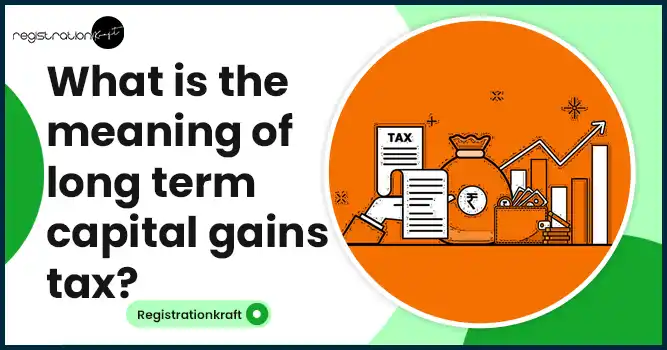Complete Guide to Long Term Capital Gains (LTCG) Tax

In the recently launched budget for the year 2024-25, the central government of India has proposed to bring down the long term capital gains tax from 20% to 12.5%. However, this would accompany indexation benefits. The fresh tax rates are slated to become effective from July 23, 2024. For those who bought their homes before this date, there would be two options to choose from.
The indexation benefit enables taxpayers to measure gains coming out of the sale of capital assets after inflation adjustment. According to taxation experts, this move by the central government would increase the LTCG tax burden. If you are a homeowner looking to find out how this is going to affect you, here is a post that will explain each & every aspect of long term capital gains tax in India.
What is Long Term Capital Gains?
For most people, buying a property means getting their own place to stay with family. However, there are many folks who buy a property for investment purposes with the intention to sell the same at a higher rate in the future.
Here, it is important to keep in mind that a property is considered a capital asset that falls under income tax liability. As a result, any kind of profit or loss emerging from the sale of a house property may be subject to tax under the ‘Capital Gains’ head. In a similar fashion, capital gains or losses may emerge from the sale of different kinds of capital assets such as mutual funds, stocks, bonds and other investments.
In other words, capital gains income refers to the amount gained from the sale of capital assets. This income is subjected to tax for the year when the transfer of capital assets took place. This is known as capital gains tax. There are major types of capital gains– long term capital gains and short term capital gains.
What comes under the term ‘capital assets’?
Capital assets may include vehicles, buildings, land, house property, leasehold rights, trademarks, patents, jewellery, machinery, and other such items.

Things that don’t come under the purview of capital assets are:
- Any stock, consumables or raw material, kept for commercial purpose
- Personal belongings such as clothes and furniture meant for personal use
- Agricultural land in rural areas
- 6½% gold bonds (1977) or 7% gold bonds (1980) or National Defence gold bonds (1980) allotted by the central government
- Special bearer bonds (1991)
- Gold deposit bonds issued under the gold deposit scheme (1999) or deposit certificates allotted under the Gold Monetisation Scheme, 2015 and Gold Monetisation Scheme, 2019 notified by the Central Government.

Long-term Capital Asset
This type of capital asset refers to an asset that is held for a period of over 36 months. If the sale of the asset is done after 36 months of buying, it would be known as a long term capital asset. However, in a few scenarios, this asset holding period can be 12 months and 24 months.
Capital assets including land, building, and house property are perceived as long-term capital assets if they are kept by the owner for 24 months or more.
Please note that the following assets if kept for more than 12 months, would be considered long-term capital assets.
- Equity or preference shares in a business listed on a standard stock exchange in India
- Securities (including bonds, debentures, govt securities etc.) featured on a recognized stock exchange in India
- UTI units, both quoted and non-quoted
- Mutual fund units (equity), both quoted and non-quoted
- Zero coupon bonds, both quoted and non-quoted
Short-term Capital Asset
A short term capital asset is an asset that is kept for a period of 36 months or less. If the sale of an asset is done before the completion of 36 months from its purchase, it wold be called a short term capital asset. However, similar to long term capital assets, there are certain asssets that can be kept for a period of 12 and 24 months in this category.
This clause becomes applicable for unpublished shares and fixed properties including land, building and house property from FY 2017-18. Do keep in mind that the shortened period of 24 months won’be apply to movable property including jewellery, debt-centric mutual funds etc.
A few assets are perceived short-term capital assets even if they are kept for 12 months or less. This is if the date of asset transfer is post 10th July 2014. They include:
- Equity or preference shares in a business listed on a stock exchange in India
- Securities listed on a recognized stock exchange in India
- UTI units, both quoted and non-quoted
- Mutual fund units (equity), both quoted and non-quoted
- Zero coupon bonds, both quoted and non-quoted
Short Term and Long Term Capital Gains Tax Rate
Calculating Capital Gains
Both short-term capital gains and long-term capital gains are calculated differently. However, you need to know the following terms to get precise results.

Cost of acquisition – This refers to the amount at which the capital asset was initially bought by the seller.
Cost of improvement – It refers to the amount that a seller spent on doing modifications to the capital asset.
Full value consideration – The consideration got or expected to be received by the seller from the transfer of capital assets. The tax on capital gains is applicable for the year of transfer, even in the case of no consideration.
Calculating Long-term Capital Gains
Long term capital gain = Full value consideration – cost of acquisition – cost of improvement – expenses deducted from full value consideration
Calculating Short-term Capital Gains
Short term capital gain = Full value consideration – expenses related to the concerned transfer – cost of acquisition – cost of improvement
Long-Term Capital Gains Tax Exemptions
If the income of a person is lower than the basic exemption limit, there will be zero tax liability. However, it is necessary to know whether a person can adjust the basic exemption limit in contradiction to long-term capital gains. It major rests on the person’s residential level (resident or non-resident). The rule says that only a resident individual or Hindu Undivided Family (HUF) is allowed to adjust the basic exemption limit against long-term capital gains.
Hence, a non-resident individual or non-resident HUF is not permitted to regulate the exemption limit with respect to long-term capital gains. A resident individual is allowed to regulate long-term capital gains only after adjusting other income first.
The basic exemption limit means the income verge below which a person is not supposed to deposit any tax. For the financial year 2022-23, the basic exemption limit mainly depends on the age and residential status of the person. Individuals who are residents and 80 years or older get an exemption limit of Rs. 5,00,000.
For resident individuals between the ages of 60 and 80 years, the exemption limit is capped at Rs. 3,00,000. Resident individuals below 60 years age have an exemption limit of Rs. 2,50,000. However, non-resident people get a typical exemption limit of Rs. 2,50,000, irrespective of their age. HUFs get an exemption limit of Rs. 2,50,000.
Categories: Taxation
Tags:





